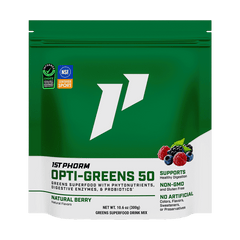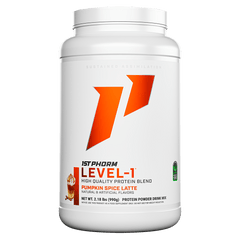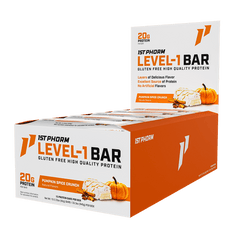How Much Cardio Does It Take To Start Burning Muscle?
A popular question for sure. However, NO straight-forward answer exists as a number of factors interact that change the answer. I’m sure there is a fair share of guys out there who would answer ‘10 minutes’ and that is the reason why they don’t do cardio.
I’ve heard it a number of times before. In addition to the different factors that interact to change the answer, it’s a challenging question to answer simply from a research perspective.
It’s hard for researchers to clearly be able to say how much muscle is being broken down at any given time because of how metabolism of amino acids works in the body.
With all that said, I’m going to attempt to provide a science-based look on how to approach answering this question for yourself.
For starters, multiple research studies have demonstrated that as an exercise bout continues for durations including and past 60 minutes that the rate of protein metabolism increases quite a bit.
For example, Lemon and Mullin had six cyclists ride for 60 minutes at 60% of their maximum capacity and reported that carbohydrate status is an extremely important factor to consider when evaluating how much protein breakdown may be occurring.
When carbohydrate stores were depleted, markers of protein breakdown rose for the entire five hour period they were evaluated and when carbohydrate stores were plentiful, the values didn’t increase until the very last time point, five hours after the start of exercise [1].
Similar results were found with another investigation that had subjects ride for two hours. In this study, carbohydrate stores in the muscle were found to be inversely proportional to indicators of protein breakdown.
This means that when carbohydrates stores were high, protein breakdown activity was low and vice versa [6]. Most people I know who are interested in this concept want to lose fat and stay lean and are deathly afraid of losing muscle.
Whether it’s a woman getting ready for a fitness competition or just wants to look good in a bikini for an upcoming vacation or a guy who could very well be interested for the same reasons.
While cardio is often used to help burn calories and shed the fat, resistance training is also a common form of exercise.
When researchers had six subjects perform one-leg knee extensions for 90 minutes at 60-65% of their maximum power output, metabolism rates of several amino acids increased 9-20 fold in what was described as a normal glycogen state.
When low levels of glycogen existed, the metabolism rates of several amino acids increased to even higher levels providing further evidence that nutritional status, specifically carbohydrate status impacts how protein metabolism changes [5].
These studies are discussed because they paint a good picture of the impact carbohydrate stores have on protein metabolism and they are exercise bouts that many gym-goers often complete.
I realize that likely no one has ever performed 90 minutes of knee extensions, but it is resistance exercise, so work with me. Honestly who would volunteer for squatting or leg pressing for 90 minutes?!
The other studies to introduce will demonstrate the impact of adding resistance exercise to regular, continuous aerobic exercise or replacing continuous aerobic exercise with high-intensity intervals.
These investigations will work to explain another factor that impacts muscle loss; resistance exercise provides a different stimulus which may or may not work in the opposite direction of the protein breakdown seen with prolonged exercise.
These studies were selected because they represent practical workouts which most people complete in their regular trips to the gym.
The first study had moderately overweight, middle-aged men perform a whole-body resistance workout of 1-2 (whole-body) sets of 12 reps to failure along with 15 – 35 minutes of cycling aerobic exercise at an intensity of 50 – 70%.
After 10 weeks, the subjects lost close to two pounds of body mass, saw little changes in their fat mass but gained around 3 pounds of muscle. In addition, several components of health were improved as well [2].
Similarly, a group of college-aged men and women over an 8 week period completed 30 minute cardio exercise bouts at an intensity of 70-80% and a whole-body resistance training program where they completed two sets of 12 repetitions to failure.
In this study, the subjects lost almost 4 pounds of fat, gained two pounds of lean mass and lost almost two percent body fat [4].
The take-home message from these studies is that you can perform regular cardio at moderate intensities at intensities ranging from 70 – 80% for 30 minutes and experience very favorably body composition changes in a short period of time when a basic resistance training program is also performed.
The final study to discuss compared continuous aerobic exercise to interval training. No resistance training was included as part of the study.
College-aged men and women exercised three times per week for six weeks and either performed sprint interval training (4 – 6 all-out 30 second sprints with four minutes rest between them) or calorie-matched durations of 30 – 60 minutes continuous aerobic exercise at 65% their maximum capacity.
When intervals were performed, fat mass was decreased by 12.4%, which was almost 7% greater than the fat lost when continuous exercise was performed (5.8%).
Lean mass actually increased in both groups by around 1% and performance and aerobic markers improved to similar degrees in both groups [3].
The authors concluded that despite exercising for a fraction of the time (but at MUCH higher intensities), fat mass changes were greater in the interval training group.
Thus, my gut instinct tells me that if a person employs a sound, balanced diet delivering enough calories to meet energy needs and combines this diet with regular, moderate intensity cardio in durations up to 45 – 60 minutes while also completing modest resistance training, muscle mass losses will be minimal.
As mentioned before, a number of factors exist to make this outcome different for people.
Another important point to consider is that oftentimes people look at how a competitive marathoner, cyclist or triathlete looks physically and make an association that if they do the same type of exercise they are going to look that way as well (this causes many athletes to skip cardio all together).
While there is some truth to this, the overall volume of cardio is a critical factor and unless you too are training and competing for several hours, this association loses some of its validity.
Furthermore, many of these types of athletes don’t do any resistance training or very little at all, which as we’ve seen provides a significant stimulus for the body to hold on to the muscle it already has.
The bottom line is it’s extremely challenging to burn just fat and not lose at least a small amount of muscle. When exercise is employed that cues the body to burn fat, it also cues it to burn protein.
Your diet, duration of cardio, type of cardio and whether or not you resistance training are all factors which can impact this outcome.
The great news is that no matter what your body composition is going to improve along with your health making a better you.
REFERENCES
- Lemon, PW and Mullin, JP. Effect of initial muscle glycogen levels on protein catabolism during exercise. J Appl Physiol, 1980. 48(4): p. 624-9.
- Lockwood, CM, Moon, JR, Smith, AE, Tobkin, SE, Kendall, KL, Graef, JL, Cramer, JT, and Stout, JR. Low-calorie energy drink improves physiological response to exercise in previously sedentary men: a placebo-controlled efficacy and safety study. J Strength Cond Res, 2010. 24(8): p. 2227-38.
- Macpherson, RE, Hazell, TJ, Olver, TD, Paterson, DH, and Lemon, PW. Run sprint interval training improves aerobic performance but not maximal cardiac output. Med Sci Sports Exerc, 2011. 43(1): p. 115-22.
- Poole, CN, Roberts, MD, Dalbo, VJ, Tucker, PS, Sunderland, KL, DeBolt, ND, Billbe, BW, and Kerksick, CM. The combined effects of exercise and ingestion of a meal replacement in conjunction with a weight loss supplement on body composition and fitness parameters in college-aged men and women. J Strength Cond Res, 2011. 25(1): p. 51-60.
- Van Hall, G, Saltin, B, and Wagenmakers, AJ. Muscle protein degradation and amino acid metabolism during prolonged knee-extensor exercise in humans. Clin Sci (Lond), 1999. 97(5): p. 557-67.
- Wagenmakers, AJ, Beckers, EJ, Brouns, F, Kuipers, H, Soeters, PB, van der Vusse, GJ, and Saris, WH. Carbohydrate supplementation, glycogen depletion, and amino acid metabolism during exercise. Am J Physiol, 1991. 260(6 Pt 1): p. E883-90.











